Nau Devi or Nine Goddesses gunship find much prominence in the Hindu Religion. The worshiper of Goddess as called shakt. The country has renowned Nau Devi temples sprawling North to South and are visited by the devotees in large numbers. To name a few Vaishno Devi Temple, Kamakhya Devi temple drag millions of devotees. As a religious tourist you have plenty of options to include in your travel plan.
Vaishnu Devi Temple in Jammu

When he was nine years old, Lord Rama met Radha and asked her to marry him. Radha accepted, and the two vowed to live a life of piety and penance. Later, Radha was given a lion, bow, and an army of monkeys to protect her. When she returned to the temple, she became Lord Vishnu’s tenth avatar, and it is believed that Radha’s spirit merged with the incarnation of the Lord.
The legend surrounding the temple is quite ancient. The legend of Mata Vaishno Devi, the one and only form of Shakti, dates back 700 years. The temple is located 61 km from Jammu. It is best visited during Navaratri, the auspicious time of the year. In addition to being an auspicious time to visit the temple, pilgrims are believed to be one step closer to heaven by visiting the cave temples of Mata Vaishno Devi.
There are many legends surrounding the temple. Legend has it that Arjun prayed to the Goddess of Wisdom to win the Kurukshetra Battle. The Pandavas then built the temple as a sign of gratitude. Today, the temple is managed by the Shri Mata Vaishnav devi Shrine Board. And if you don’t believe in legends, here are some other reasons to visit the Vaishnu devi temple in Jammu.
The temple is situated in the Trikuta mountains, 61 km from Jammu. It is considered one of the holiest pilgrimage sites in north India. It is surrounded by five thousand feet of majestic mountain scenery. At its highest point, the Vaishnodevi Mandir is crowned with the three sacred pindis, or holy relics of Goddess Shakti. The Pindis are a reflection of Goddess Shakti’s three sacred forms.
Dhari Devi Temple in Dangchaura, Uttarakhand
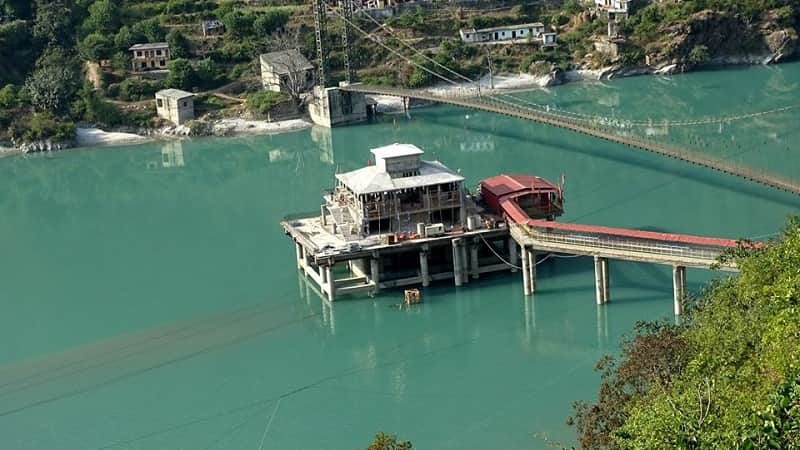
The Dhari Devi Temple is located on the banks of Alaknanda River, which runs between Rudraprayag and Srinagar in Uttarakhand, India. The temple is also referred to as the Dangchaura Temple. Whether you are visiting the temple to worship Mother Goddess or to get away from the busy life of the city, you will find a tranquil atmosphere here.
Besides the Dhari Devi temple, you can also visit the other religious sites in the state. These include the Char Dham (the three holy places in the country) and the Kaliyasaur. You can easily reach Dangchaura by road or by foot. It is a good idea to plan your visit to the temple in advance to avoid any disappointment. In case you’re traveling on a budget, you can also opt for bus or train travel, which can save you money.
After the huge flood of Alakhananda river, the Dhari Devi temple was built. A woman was crying in the river, and locals discovered that the upper half of the Goddess Kali idol was fixed on a rock. The goddess subsequently instructed the locals to fix the idol under the open sky, and thus, the Dhari devi temple was born. In the end, it is the only temple in Uttarakhand dedicated to the goddess Kali.
The lower half of the idol is located in Kalimath, which is located 67km from Dhari Devi temple in Dangchaura. This is on the way to the Kedarnath temple in Rudraprayag. There is also a bridge near the temple, which is a good place to take a picture. To reach the temple, you need to walk for about 15 minutes.
Shri Naina Devi Temple in Bilaspur, Himachal Pradesh
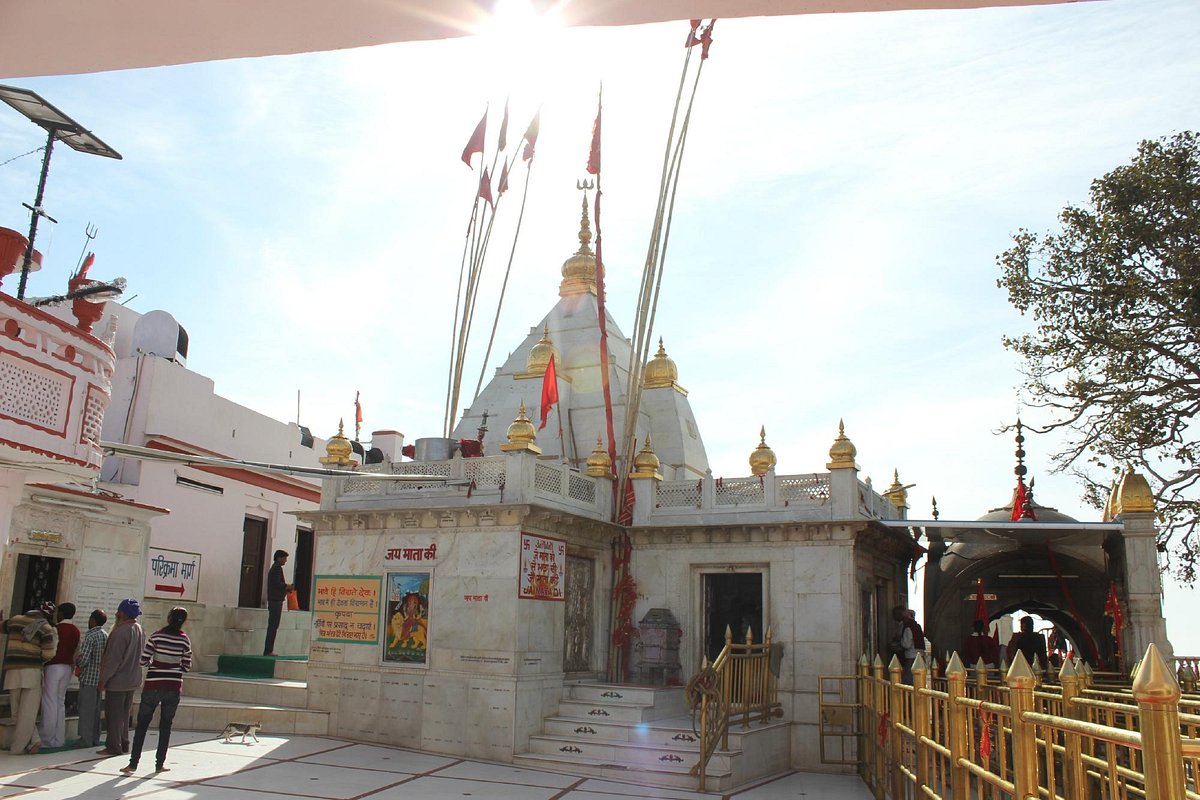
The Shri Naina Devi Temple is located on a hilltop in Bilaspur, Himachal Pradesh. Located just off National Highway 21, the temple is accessible by either a concrete road that winds around the hill or a cable car. The temple itself overlooks Gobind Sagar, a lake created by the Bhakra-Nangal Dam.
Dedicated to the Hindu goddess Sati, the temple was built on the site where the demon fell to earth. The temple was built solemnly to commemorate the day Sati fell to earth. The temple is called ‘Naina’, after the term ‘Naina’, which means ‘eyes’. Millions of Hindus and Sikhs flock to this temple during the Navratras to pay homage to the divine goddess.
The shrine is about 30 km from the town of Shimla. The closest railway station is Anandpur. Private buses and taxis take devotees to the temple from the bus stand. The temple is also connected to the national highway-21, making it easy for pilgrims to reach it by road. There are frequent transport bus services from cities in Punjab and Himachal Pradesh.
The Shri Naina Devi Temple is one of the most sacred Hindu shrines in Himachal Pradesh. It is located at an altitude of 1219 metres above sea level and is one of the 51 Shakti Peeths. It is visited by thousands of people every year, and during the Navratras, its number increases dramatically. You can even take a cable car to the temple.
Jwala Devi Temple in Himachal Pradesh

If you’ve never been to Himachal Pradesh, this is the perfect time to visit Jwala Devi temple. Known for its gold-domed shrines and sacred flame, this temple is situated in a beautiful mountain range. You can spend hours exploring the temple and its surroundings, and then return home with unforgettable memories. Read on to find out more about this holy place!
The main attraction of the temple is the burning flame of the Goddess, a symbol of her powerful presence. The flames appear in nine different configurations, sometimes less than nine and other times more than nine. The temple has no idol, only nine ceaseless flames that are named after the nine different goddesses that reside within. The primary flame represents Brahma, the seventh in the line of the Hindu pantheon, and the ninth is called the Mahakali, the provider of Bhakti and Mukti.
The king built the temple for Maa Ji and to test her nearness, he sent a general to Jwalaji. The general tried to smother her with iron sheets, but she tore them. Afterwards, the general had to climb up the hill for two kilometers to reach the stream and get it flowing down the temple. Hence, the general was able to make a visit to this holy place, and later on he began to worship at Jwala Ji temple.
This enchanting place has many myths surrounding it. In Hindu mythology, Goddess Sati’s tongue fell in this valley. The Lord Vishnu was displeased with this incident and cut the goddess’ corpse with his Chakra, scattering her body in 51 pieces. The temple contains a copper pipe, which emits natural gas. Priests ignite this pipe to produce a blue flame.
Sheetla Devi Temple Dharamshala Himachal Pradesh
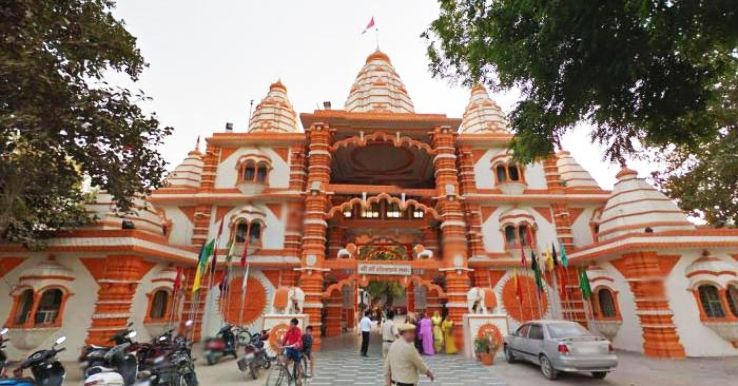
The Sheetla Devi Temple is one of the most important Hindu pilgrimages. Located near the Chintpurni Devi Temple in Bharwain, this temple is considered the ninth Devi sanctuary. The temple is located on a hilltop and is popular with devotees. The nearby residents are friendly and accommodating. It is considered one of the most spiritually active places in the state of Himachal Pradesh.
The shrine is dedicated to Goddess Durga. This temple is particularly active on auspicious days. The hilltop is a popular spot for pilgrims, who hike up to the temple for a spiritual re-charge. Once there, many pilgrims spend their days chanting the name of the goddess. It is believed that worshiping the goddess is a great way to purify oneself of any past sins or faults. In fact, there are seven major abodes of goddess Shakti in Himachal Pradesh.
Nearby towns include Una and Katra. The Sheetla Devi temple is located about 7 km from Una and 10 minutes away from Bharwain. The temple attracts tourists from around the world. A visit to this temple is sure to be an unforgettable experience. Consider the following tips when planning your trip to this Himachal pradesh pilgrimage:
Chamunda Devi Temple in Kangra Himachal Pradesh

You should visit the Chamunda devi temple in Kangra, Himachal Pradesh, to pray to the Goddess. It is located 19 km from Palampur town in the Dharamshala tehsil. The temple is dedicated to Shri Chamunda Devi, a form of the Goddess Durga. If you visit this temple, you’ll definitely have a wonderful experience.
The Chamunda Devi temple is located on the banks of the Banganga River in Kangra, Himachal Pradesh. The temple is just a few kilometers away from the city of Palampur, making it one of the most popular spots in the Chamba district. Devotees flock to this temple all year round, but the Navratri season is busiest for visitors.
The Chamunda devi temple was built by a priest who was given a dream by the goddess to dig a tomb and place the idol of Chamunda here. He acted on the vision and dug the tomb and placed the idol in a convenient location. This temple is located near a cremation ground, which helps serve the surrounding villages. There is also a small shrine where people can offer prayers.
The Chamunda devi temple is located in the town of Kangra, Himachal Pradesh. The name derives from the two demons Munda and Chanda. The goddess had killed them. This temple is a place of worship for the entire village. A visit to this temple will leave you with a lasting memory of the beauty of the place. The temple is the ideal place to pray to the Goddess and enjoy the magnificent view of the Dhauladhar range.
Mansa Devi Temple Panchkula Haryana

The temple is dedicated to the goddess Mansa Devi and is located in the Panchkula district of the state of Haryana. If you haven’t yet visited this temple, it’s time to plan a trip now! Here are some tips to make your visit to this temple a memorable one:
First, you can visit the temple and worship Mansa Devi. This temple is a popular pilgrimage site. Its marble idol is adorned with sparking ornaments to add to its spiritual appeal. The temple also hosts pujas and festivals, which draw crowds. The main temple is just 200 meters from the patiala temple. During the annual Navratra mela, it is visited by thousands of devotees.
After you’ve finished worshipping Mansa Devi, you can visit the Patiala temple, which was built in the 1840s by Maharaja Gopal Singh of Manimajra. It features a chunni that is carved from pebbles, and a statue of the Goddess Lakshmi and Goddess Saraswati. There are also various other temples in this area.
In the heart of the Shivalik foothills, Mata Mansa Devi Temple is a beautiful Hindu temple dedicated to the goddess Mansa. Located near Mani Majra and Panchkula, it is one of the most popular Shakti temples in North India. Visitors flock to the temple to attend the annual Navratra fair, which takes place during the month of Ashvin.
Chintpurni Devi Temple Una Himachal Pradesh
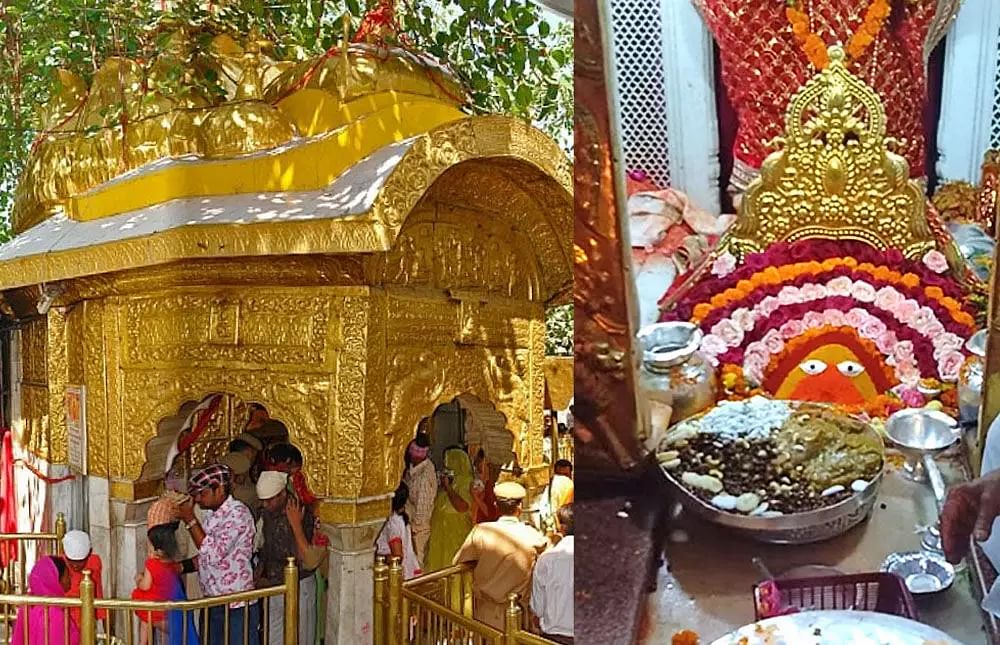
The town of Chintpurni in Himachal Pradesh lies about 40 kilometers north of Una and is close to the state border with Punjab. Chintpurni’s elevation is 977 meters, and it is home to the Maa Chintpurni Devi temple, a major pilgrimage site and one of the Shakti Peethas.
The Chintpurni Devi temple is dedicated to the site where the goddess’ head fell. The goddess is revered by both Hindus and Buddhists. The temple is located close to the famous Shiva temple in the area. The story goes that Goddess Bhagwati appeared to the god Shiva and told him to uproot a massive stone. The result was a temple dedicated to Chintpurni Devi, which is the patron deity of the town.
While the climate of Chintpurni is pleasant in the summer and warm and humid during the monsoon, it can get extremely cold during the winter months. Visitors are advised to wear heavy woollen clothing in the colder months and avoid spitting or begging. Don’t feed monkeys or spit. There are plenty of hotels near the temple. Several of these are owned and operated by the Himachal tourism department.
If you’d like to visit the temple, you can get there by bus. The nearest bus stand is 1.5 km away, and the temple complex is surrounded by a busy market. Buses are available to Chintpurni from four in the morning to 11pm every day. If you’re planning to visit this temple in Una, be sure to book a bus to the town center. Chintpurni is well connected to Dharamshala and Hoshiarpur.
Brajeshwaridevi Temple in Kangra Himachal Pradesh
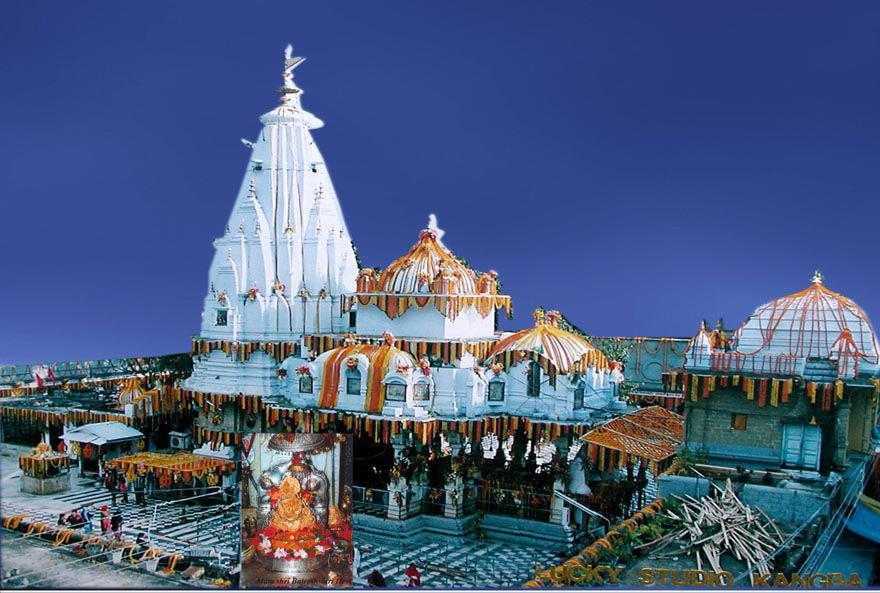
A visit to the Brajeshwaridevi temple in Kangra Himachal Pradesh is a must-do for anyone visiting the region. The temple has a unique architectural style and is situated on a hill, making it unique from other Kangra temples. Its name is derived from the fact that the temple is surrounded by water during eight months of the year. However, the water keeps its natural color and the stone structure intact. The temple also has stone images of Mother Kali and Lord Ganesha.
The temple is surrounded by a stone wall and has a main gate entrance that resembles a fort entrance. There is a large square Mandapa in the main area, which is surrounded by two massive balconies in the north and south. This temple also houses a small shrine dedicated to Bhairav, which is a devotee of the Goddess. The main temple is also home to three tombs.
The main deity of the temple is Brajeshwari Devi, who is also known as Vajrayogini. She is revered as a saviour and is said to protect the devotees from evil spirits and injuries. As a result, the temple attracts devotees from far and wide. So, if you are planning a trip to Kangra, you’ve got to plan it carefully.
The temple is located just outside the town of Kangra, and was once famous for its legendary wealth. In fact, the goddess is said to have fallen in the temple in this location, and the structure is believed to be as old as the Mahabharta period. After the Muslim invasion, the temple was ruined, but was rebuilt in the 19th century on the orders of the Government of India.

